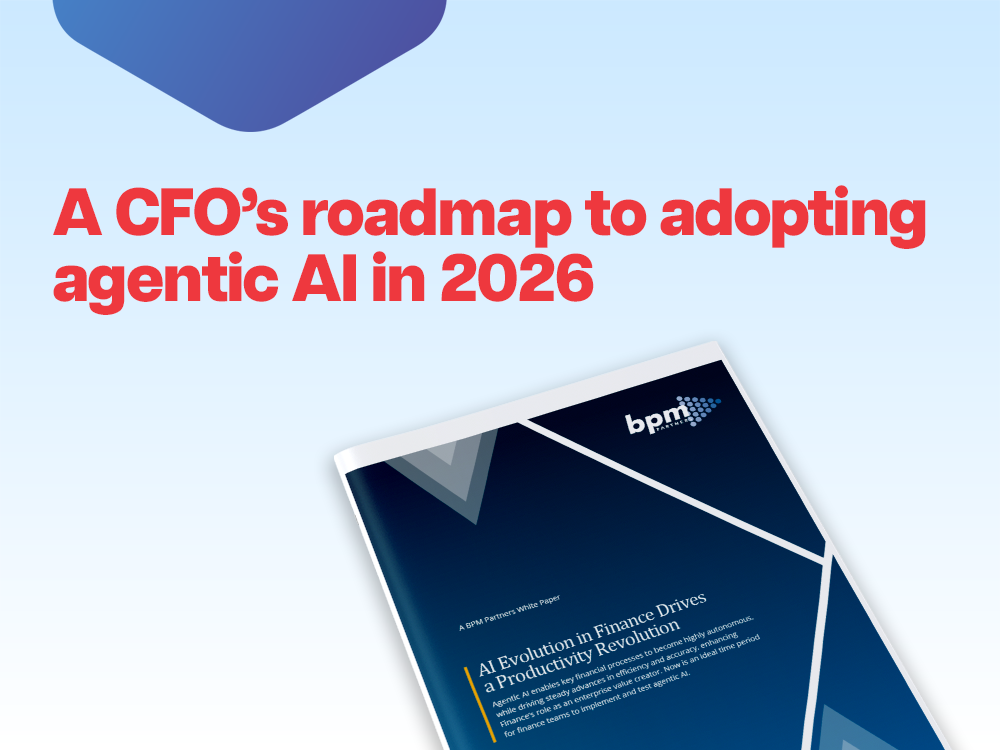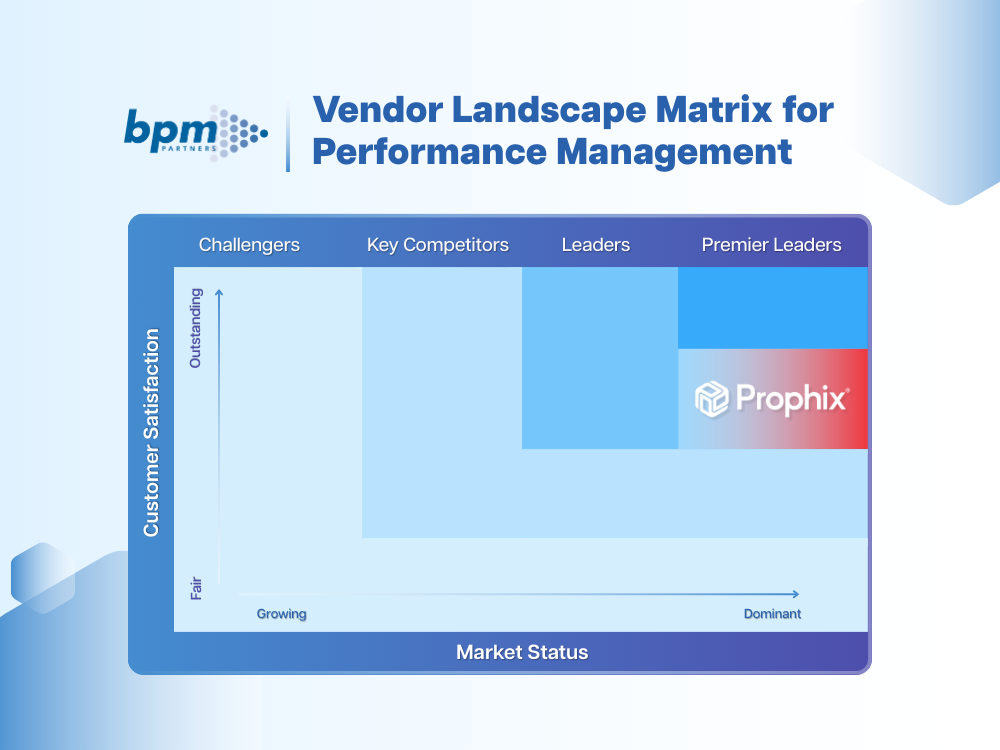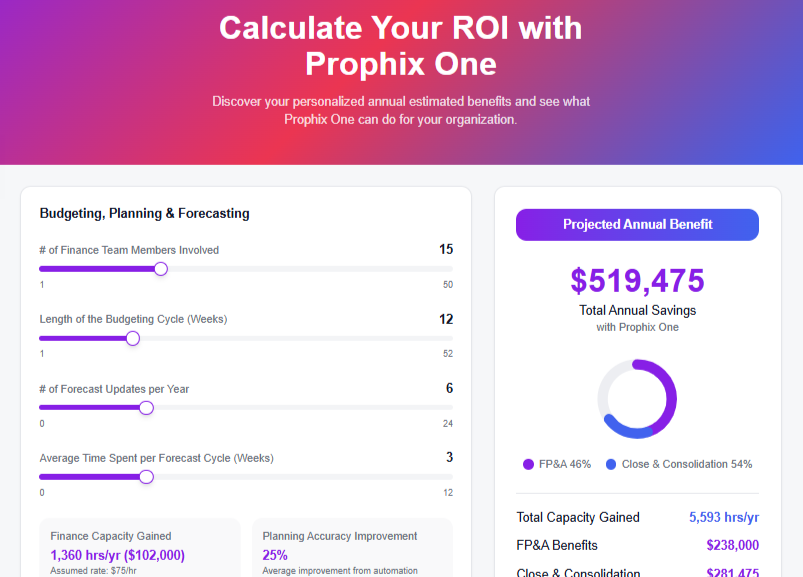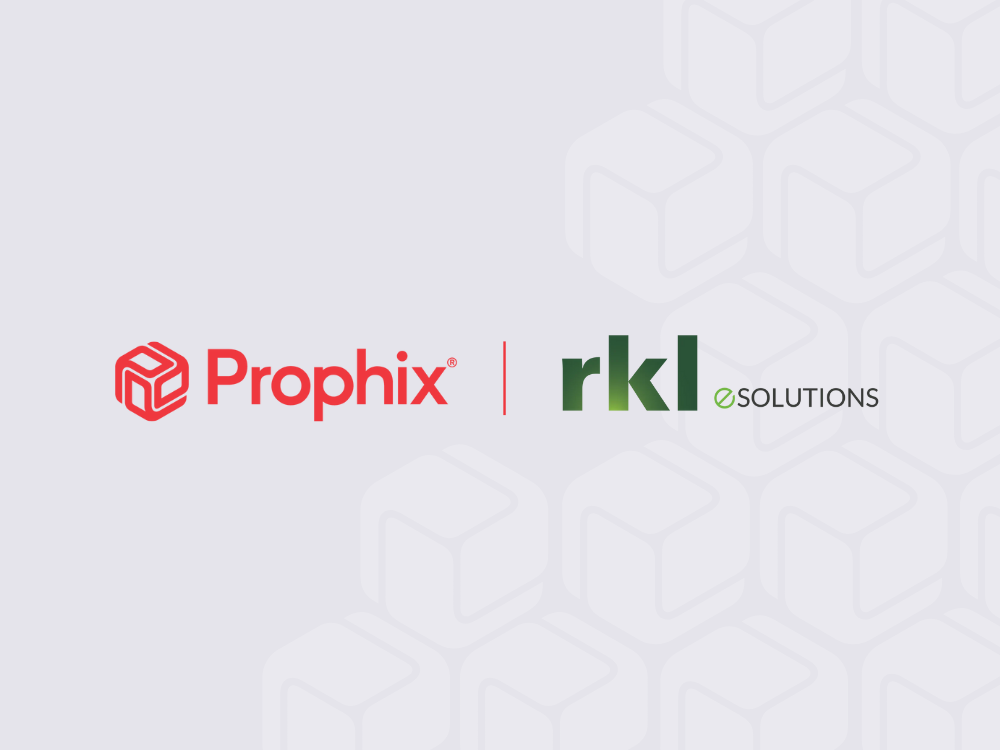Download Analyst Report
BUDGETING AND FORECASTING SOFTWARE
Budgeting and planning for greater accuracy and agility
Why choose Prophix One™ for budgeting and planning

Save time and increase accuracy
Leave disconnected spreadsheets and broken formulas behind. Quickly build and maintain your financial models to drive agility.

Customize your planning approach
Customizable cash flow and financial planning solution to fit your business needs. You have the flexibility to contribute to budgets, approve plans, and manage your numbers.

Automated efficiency
Set up your budget templates once, and Prophix One handles the rest, distributing budgets automatically and tracking changes for transparency and control.

Collaboration made easy
Real-time collaboration that's simple for your entire team. You can assign task owners and multiple approvers, set reminders and deadlines, and keep everyone engaged and aligned.

Automate the budgeting process
Minimize mistakes and speed up your budgeting process. With workflow and standardized templates you can be confident that your budget contributors have access to the correct data at the right time.

Single source of budgeting and planning truth
Centralize your data and gain unprecedented control, visibility, and efficiency of your budgeting and planning process. Prophix One is your single source of truth for budgeting and planning that provides real-time access to financial data.

Integrated planning with instant results and no delays
Prophix One FP&A Plus offers integrated planning, allowing you to update sales projections, inventory plans, and workforce assumptions instantly, with real-time updates flowing directly into your financial forecasts. Backed by Prophix Infinix, you’re always working with the latest planning technology—built to scale as your business grows and designed to drive smarter, faster decisions across the organization.
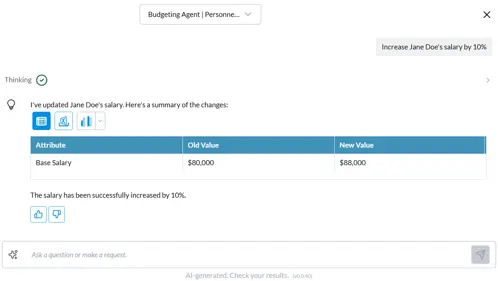
Smarter budgeting and seamless planning powered by AI
The Prophix One Budgeting Agent streamlines planning across key areas—whether it’s workforce budgets or operating expenses—so you can complete plans quickly and accurately. Make changes in plain language, update details or apply bulk adjustments across departments, and create new records in seconds with every action captured for auditability. With Predictive Forecasting, you can anticipate trends and model different outcomes, eliminating manual work. Combined with the Prophix One Reporting Agent, you gain the clarity to understand what’s happening, the speed to adjust plans instantly, and the confidence to make the right decisions.

Finance as we know it is changing
What does the next generation budgeting and planning software look like for the Office of the CFO? Learn how to research, evaluate, and purchase budgeting and planning software. Check out the Ultimate Guide to Next-Gen Finance.
Streamline budgeting and planning while improving collaboration

Reduce manual processes that lead to delays, errors, and data loss.

Transform budgeting and planning accuracy.

Increase flexibility with top-down and bottom-up planning.

Save time by eliminating error-prone spreadsheets.

Experience an integrated FP&A workflow.
See how our customers took their budgeting and planning to the next level
Hear from real customers
Streamlined budgeting is our biggest win. With 67 Excel sheets having to be tied out, budget consolidation at the end of data entry was always a massive multi-day undertaking. We can now submit budgets, with confidence, to senior leadership and ownership with no fear of missing data.
We are using Prophix One for our monthly financial reporting, annual budgeting, and monthly WIP reporting. We’re also creating dashboard reporting for everyone from our PMs to our executive C-suite and Board of Directors. The time it takes to create these deliverables has been shortened significantly through the efficiencies gained using Prophix One.

Made for finance leaders
Discover Prophix One and unlock your potential for success.

Reporting & Analytics
Increase data accuracy and reporting efficiency, affording you more time for valuable analysis.

Financial Consolidation
Streamline close windows by eliminating manual processes and automating recurring ones.

Automation & Workflow
Accelerate financial processes and improve collaboration.

AI Insights
Utilize AI to gain a deeper understanding of your business.

MS365 Add-In
Boost Excel’s financial modeling and planning capabilities and create insightful PowerPoint presentations.

Integrated Business Planning
Gain visibility across your business with integrated cross-functional business planning.

Account Reconciliation
Collaborative account reconciliation for smarter, faster financial close.
Frequently asked questions
What is budgeting and planning software?
Budgeting and planning software is a type of financial software designed to help organizations create, manage, and monitor their budgets and financial plans. Budgeting and planning software streamlines the budgeting process, improves accuracy, enhances collaboration, and provides insights for better financial decision making.
How is budgeting in Prophix One™ different than budgeting through Prophix One’s MS365 Add-In?
Prophix One Workflow aligns all of your budget stakeholders into a single, unified budgeting process. To meet the unique needs of each budget owner, Prophix One provides the flexibility to input data either in Prophix One’s web interface or in Excel, via Contributor. Regardless of how you choose to enter your budget, data is automatically incorporated into your Financial Planning and Analysis planning model – no need to review multiple spreadsheets to aggregate data from multiple stakeholders. Data aggregation is automatic, and approvals are built in.
How does Prophix One™ deal with versioning?
Version control is simplified in Prophix One, allowing budget owners to lock down the versions that users don’t have access to and easily update templates and reports so that users can only see the correct version.
Does Prophix One™ have data manipulation functionality like spreading?
Spreading in Financial Planning and Analysis is automatic. Users simply input the numbers they want at a summary level and are prompted to confirm how they want it spread to the lowest level (e.g., evenly, based on actuals, etc.). Other data manipulation capabilities allow for the flexibility to make uniform adjustments or accomplish more complex spreading that factors in multiple parameters.
